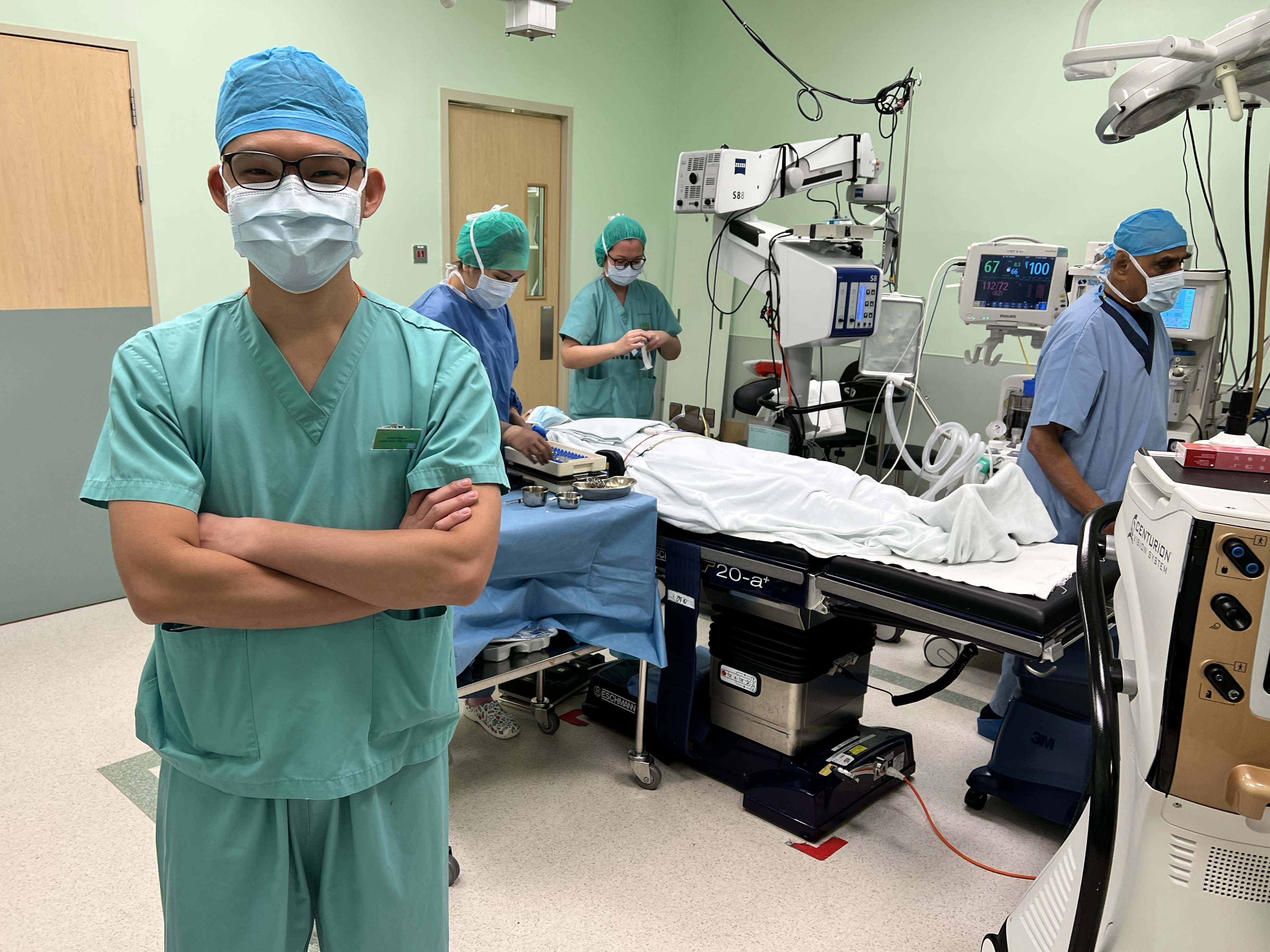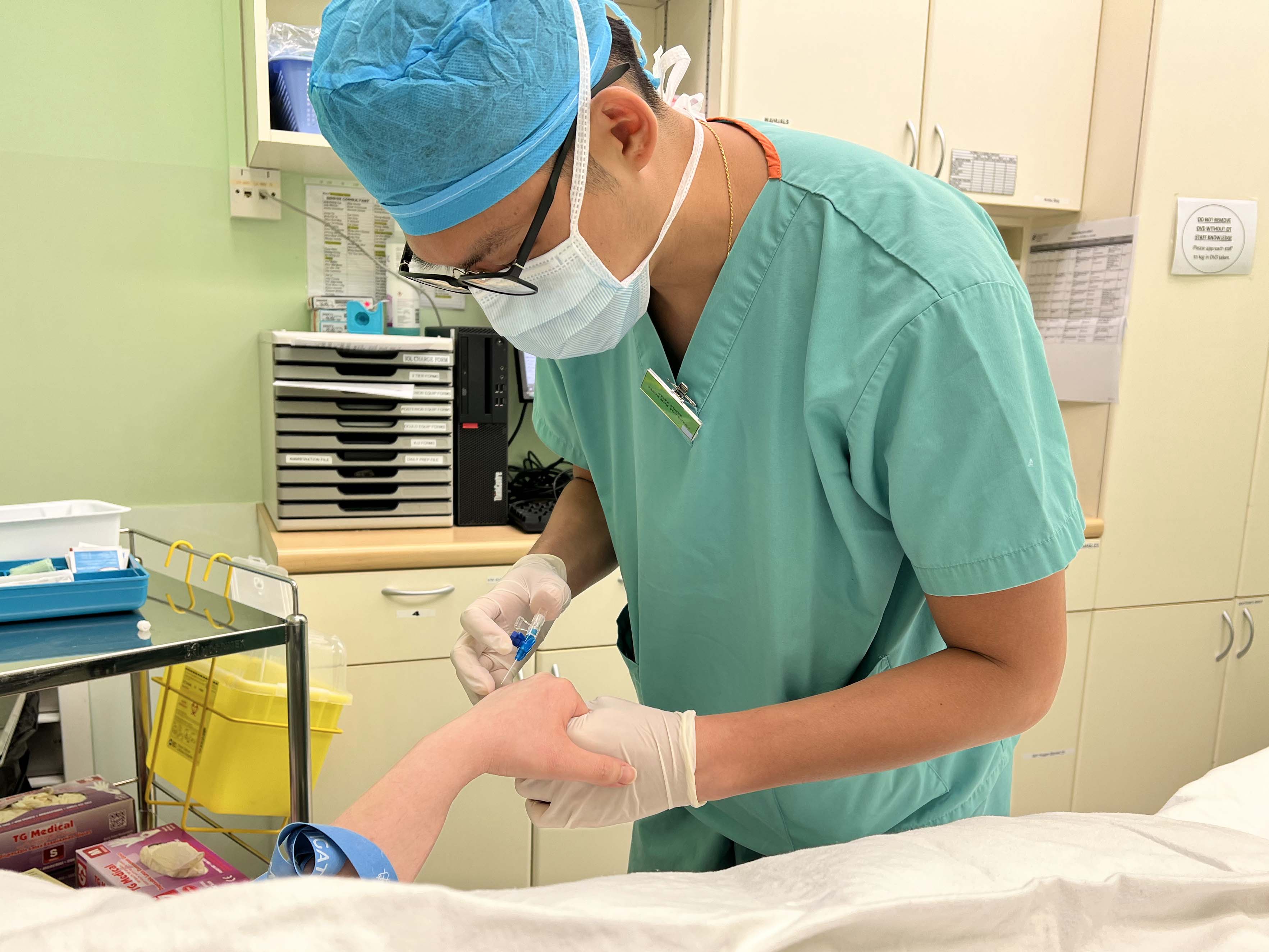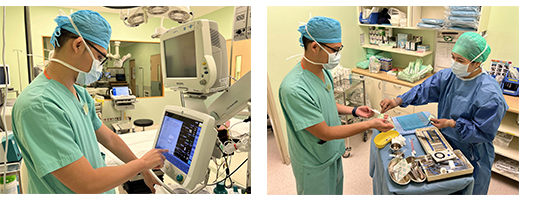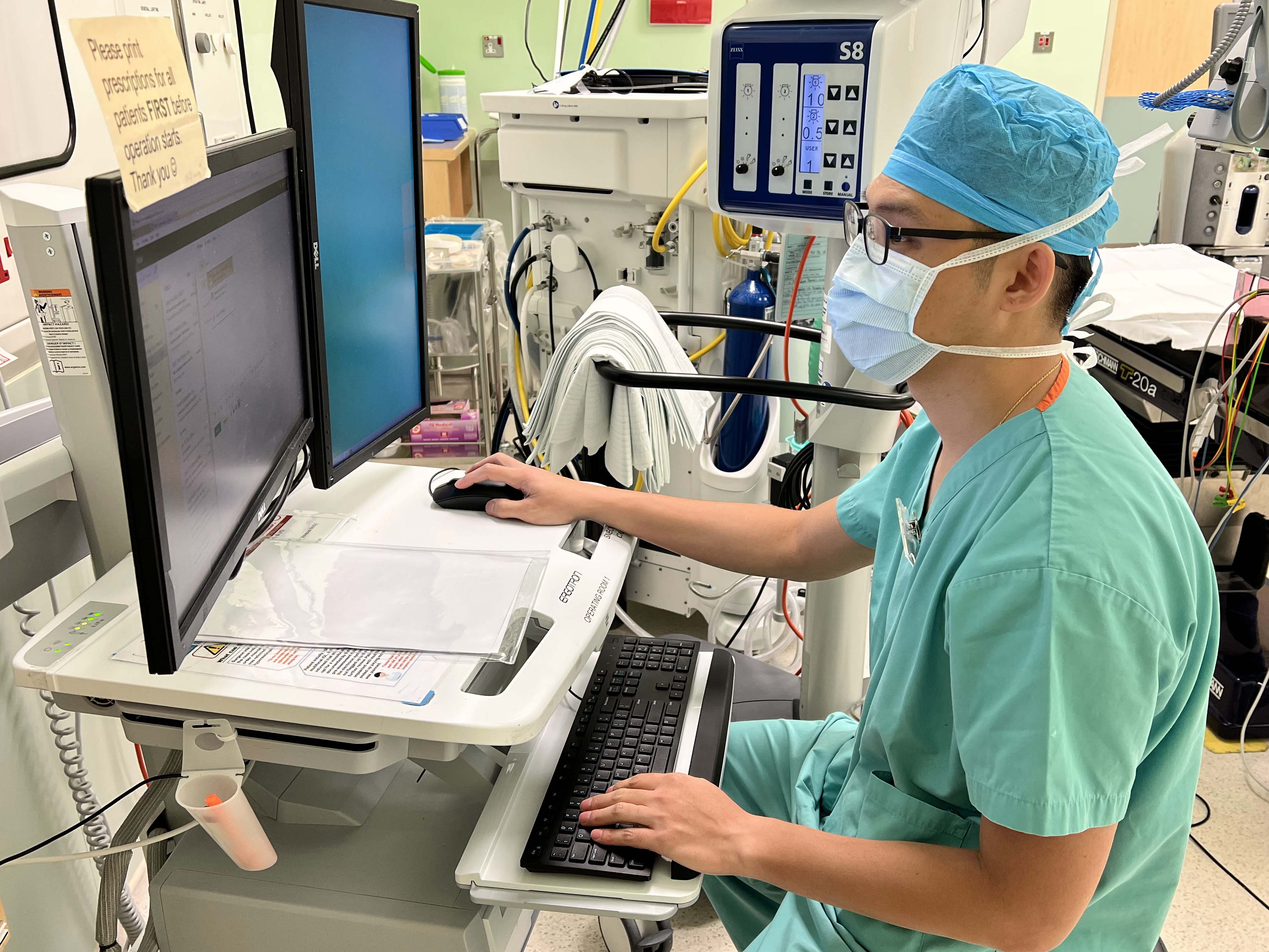Jason Mok plays a major role in keeping patients safe during surgery.

Thirteen years is a long time to stay in any job, particularly a challenging — but fulfilling — one like nursing. For Staff Nurse Jason Mok, his dedication to delivering the best care for patients drives him forward and motivates him to constantly seek improvement.
In the beginning of his career, Jason cared for patients in the inpatient ward at Singapore General Hospital. He subsequently joined SNEC as an Enrolled Nurse and was trained in the Anaesthetic Unit (AU) under the Operating Theatre (OT) Department. Later on, he became a scrub nurse who assisted surgeons to ensure smooth procedures.
Now, the 34-year-old has returned to the AU, with the goal of becoming an Advanced Practice Nurse (APN). “Every action of mine can have a big impact on a patient’s comfort and recovery journey. The role of APNs allows for more involvement in the patient’s treatment, and I feel it would give me even greater job satisfaction,” he said.
EXPANDED RESPONSIBILITIES
As an AU nurse, Jason’s main task is to assist the anaesthetist during the surgery. His responsibilities include securing the patient’s breathing tube during general anaesthesia (GA) and ensuring that the patient’s vital signs are monitored throughout the surgery.
Although he had to familiarise himself with new anaesthetic machines, as well as the locations of commonly used AU consumables and equipment in the OT, the transition from being a scrub nurse to an AU nurse was relatively smooth — thanks to his past experience and the help of his colleagues.
“It is essential that I am able to perform basic calibration and troubleshooting of the machine because the breathing of a patient under GA is dependent on it,” Jason explained. “It is also important to build rapport with the anaesthetists, as we (anaesthetist and the AU nurse) are the only personnel in the anaesthetic team in each OT. Hence, I must be skillful and knowledgeable enough to assist the anaesthetist during surgeries.”
STRIVING FOR EXCELLENCE
Jason is also part of the team, comprising Assistant Director of Nursing (ADN) Foo Lee Lian, ADN Soh Ling Ling, Assistant Nurse Clinician Elizabeth Phua, and Staff Nurse Ong Chu Ting, who won the third prize for SingHealth’s Quality Improvement Project Award in 2021.
The team streamlined pre-operative processes that give nurses more time to focus on other important areas, such as patient assessment and preparation of essential items. For example, they introduced a ‘box system’ so that nurses can collect or prepare these items in a box as early as one day before the surgery. This way, the nurses can take note of any items that may be low in stock and have them delivered in advance, which prevents potential delays.
Jason is not one to rest on his laurels. In fact, he has just completed a Bachelor of Science in Nursing (Honours) programme, and has plans to obtain an Advanced Diploma in Nursing and a Master’s Degree in Nursing.
Currently, the go-getter is also involved in two projects aimed at reducing anxiety for patients undergoing surgery. Based on different types of intervention, one project is targeted at paediatric patients and the other at adult patients.
For those who are considering a career in nursing, Jason said that SNEC’s Nursing-OT department allows one to be highly trained and proficient in assisting all kinds of ophthalmic subspecialty surgeries. “After you have mastered these skills, there are also avenues for you to create change, and improve the standard of care for patients or work processes through kaizen (continuous improvement) initiatives,” he added.
A GLIMPSE INTO A DAY OF JASON’S LIFE
8am–11.30am
STARTING THE DAY
A major responsibility for Jason is preparation work.
In the OT:
- stocks up sufficient consumables and drugs
- calibrates the anaesthetic machine by starting it up and performing system checks to ensure it is safe for use. This machine mixes and regulates the flow of medical gases and inhalational anaesthetic agents (such as nitrous oxide and oxygen) to induce and maintain anaesthesia

To prepare a patient for surgery:
- sets an intravenous cannula to administer drugs through the veins to sedate or control abnormal vital signs
- attaches supplemental tubing to provide additional oxygen during surgery

During a surgery:
- monitors the patient’s vital signs
- supplements additional instruments and consumables required to the surgical team
On average, Jason is involved in 8 to 10 surgeries a day.
11.30am–12.30pm
MAKAN TIME
Jason usually takes a well-deserved break around this time to have his lunch.

Whatever spare pockets of time Jason has is usually spent on his ongoing kaizen projects, which includes data collection and improvement of interventions.
12.30pm–5pm
RUNNING LIKE CLOCKWORK
Jason’s work after lunch mirrors his duties in the morning, with some additional chores at the end of the day:
- top up consumables sufficiently for the next day
- conduct basic disinfection of areas used during the day
After a long day at work, Jason heads home to spend quality time with his wife and four-year-old son.
Click
here to check out other articles in
SINGVISION Issue 2/2021.
